David McIntyre is one of Scotland’s leading aviation pioneers and the man behind Prestwick Airport. In 1933, McIntyre and the Marquis of Clydesdale were the first to fly over Mount Everest. Three years later, they established a flying school at Prestwick – an important training centre for RAF pilots in World War II. McIntyre was heavily involved and also in the development of Prestwick into an international airport. The flying school later became Scottish Aviation, which manufactured the single-engine Prestwick Pioneer and Twin Pioneer aircraft.
A print and text about The Prestwick Pioneer.

The text reads: The Pioneer began life as a three-seat military communications aircraft built to specification A.4/45 and powered by a 170kW dc Havilland Gipsy Queen 34 engine. The original military requirement failed to materialise and so the basic design was developed into a civil light transport aircraft as the (Prestwick) Pioneer.
A photograph and text about Prestwick Golf Course.
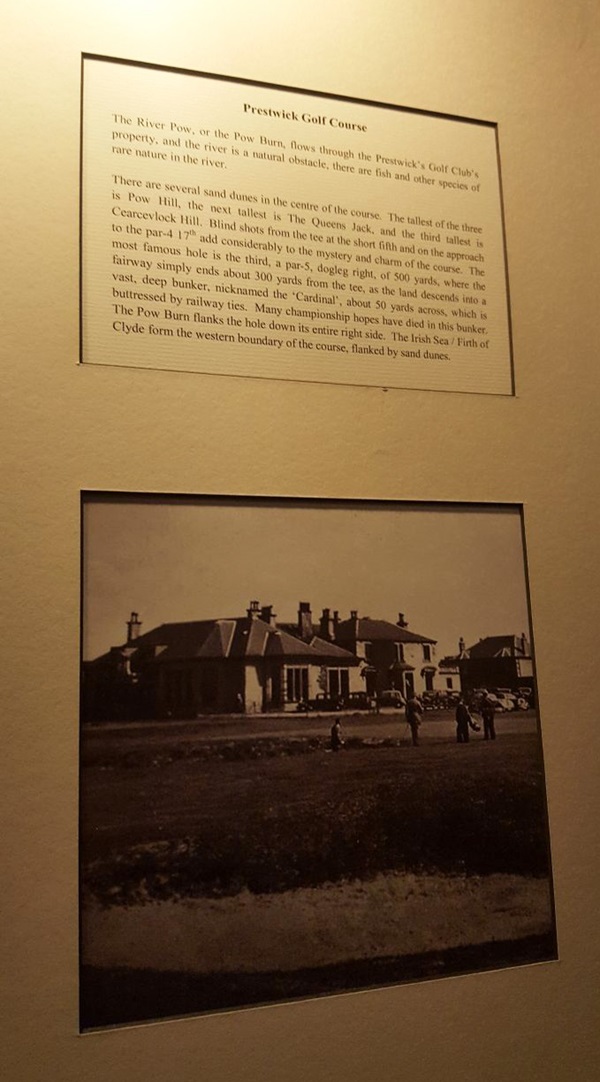
The text reads: The River Pow, or the Pow Burn, flows through the Prestwick Golf Club’s property, and the river is a natural obstacle, there are fish and other species of rare nature in the river.
There are several sand dunes in the centre of the course. The tallest of the three is Pow Hill, the next tallest is the Queens Jack, and the third tallest is Cearcevlock Hill. Blind shots from the tee at the short fifth and on the approach to the par-4 17th add considerably to the mystery and charm of the course. The most famous hole is the third, a par-5, dogleg right, of 500 yards, where the fairway simply ends about 300 yards from the tee, as the land descends into a vast, deep bunker, nicknamed the Cardinal, about 50 yards across, which is buttressed by railway ties. Many championship hopes have died in this bunker. The Pow Burn flanks the hole down its entire right side. The Irish Sea/Firth of Clyde form the western boundary of the course, flanked by sand dunes.
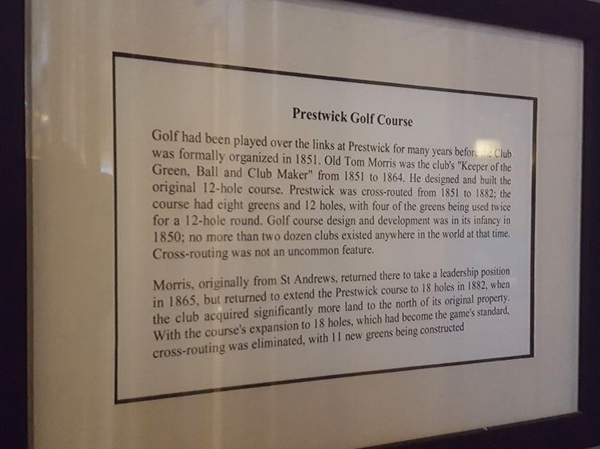
The text reads: Golf had been played over the links at Prestwick for many years before the club was formally organised in 1851. Old Tom Morris was the club’s ‘Keeper of the Green, Ball and Club Maker’ from 1851 to 1864. He designed and built the original 12-hole course. Prestwick was cross-routed from 1851 to 1882; the course had eight greens and 12 holes, with four of the greens being used twice for a 12-hole round. Golf course design and development was in its infancy in 1850: no more than two dozen clubs existed anywhere in the world at that time. Cross-routing was not an uncommon feature.
Morris, originally from St Andrews, returned there to take a leadership position in 1865, but returned to extend the Prestwick course to 18 holes in 1882, when the club acquired significantly more land to the north of its original property. With the course’s expansion to 18 holes, which had become the game’s standard, cross-routing was eliminated, with 11 new greens being constructed.
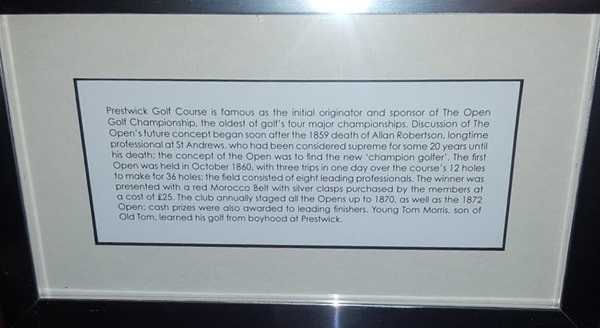
The text reads: Prestwick Golf Course is famous as the initial originator and sponsor of the Open Golf Championship, the oldest of golf’s four major championships. Discussion of the Open’s future concept began soon after the 1859 Allan Robertson, long time professional at St Andrews, who had been considered supreme for some 20 years until his death; the concept of the Open was to find the new ‘champion golfer’. The first Open was held in October 1860, with three trips in one day over the course’s 12 holes to make for 36 holes; the field consisted of eight leading professionals. The winner was presented with a red Morocco Belt with silver clasps purchased by the members at a cost of £25. The club annually staged all the Opens up to 1870, as well as the 1872 Open; cash prizes were also awarded to leading finishers. Young Tom Morris, son of Old Tom, learned his golf from boyhood at Prestwick.
Photographs and text about Thomas Mitchell Morris.
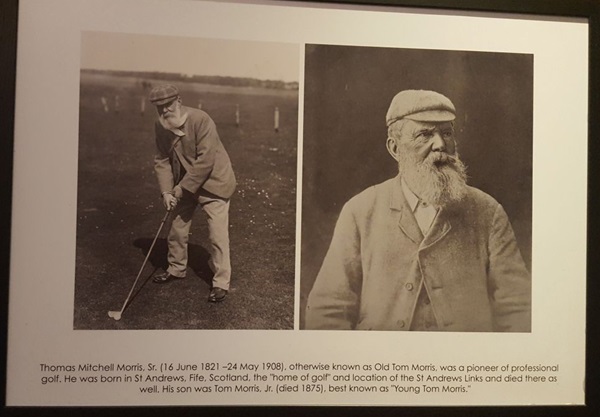
The text reads: Thomas Mitchell Morris, Sr. (16 June 1821 – 24 May 1908), otherwise known as Old Tom Morris, was a pioneer of professional golf. He was born in St Andrews, Fife, Scotland, the ‘home of golf’ and location of the St Andrews Links and died there as well. His son was Tom Morris, Jr. (died 1875), best known as Young Tom Morris.
A photograph and text about Tom Morris Junior.
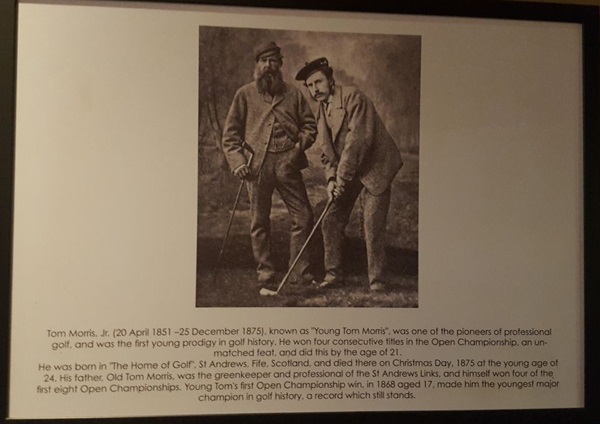
The text reads: Tom Morris, Jr. (20 April 1851 – 25 December 1875), known as Young Tom Morris, was one of the pioneers of professional golf, and was the first young prodigy in golf history. He won four consecutive titles in the Open Championship, an un-matched feat, and did this by the age of 21.
He was born in the ‘home of golf’ St Andrews, Fife, Scotland, and died there on Christmas Day, 1875 at the young age of 24. His father, Old Tom Morris, was the greenkeeper and professional of the St Andrews Links, and himself won four of the first eight Open Championships. Young Tom’s first Open Championship win, in 1868 aged 17, made him the youngest major champion in golf history, a record which still stands.
Text about Elvis at Prestwick.
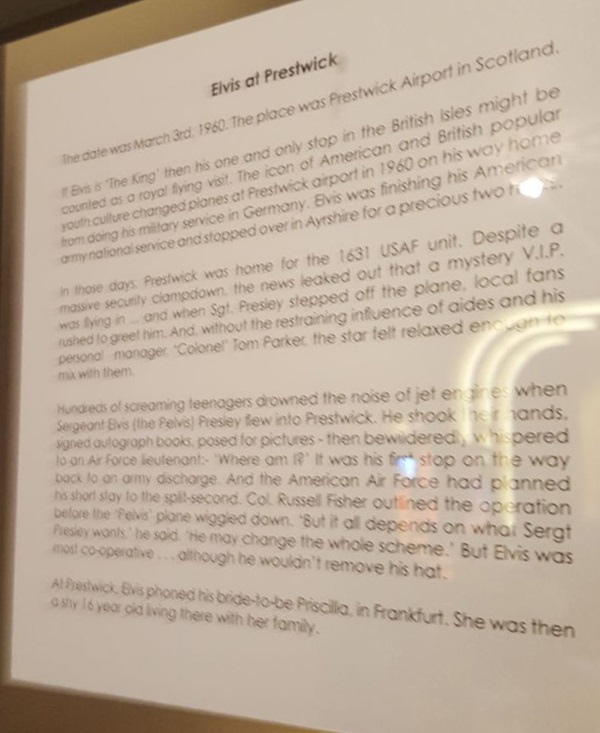
The text reads: The date was March 3, 1960. The place was Prestwick Airport in Scotland.
If Elvis is ‘The King’ then his one and only stop in the British Isles might be counted as a royal flying visit. The icon of American and British popular youth culture changed planes at Prestwick airport in 1960 on his way home from doing his military service in Germany. Elvis was finishing his American army national service and stopped over in Ayrshire for a precious two hours.
In those days, Prestwick was home for the 1631 USAF unit. Despite a massive security clampdown, the news leaked out that a mystery VIP was flying in … and when Sgt. Presley stepped off the plane, local fans rushed to greet him. And, without the restraining influence of aids and his personal manager, Colonel Tom Parker, the star felt relaxed enough to mix with them.
Hundreds of screaming teenagers drowned the noise of jet engines when Sergeant Elvis (the Pelvis) Presley flew into Prestwick. He shook their hands, signed autograph books, posed for pictures – then bewilderedly whispered to an Air Force lieutenant: “Where am I?”. It was his first stop on the way back to an army discharge, and the American Air Force had planned his short stay to the split-second. Col. Russell Fisher outlined the operation before the ‘Pelvis’ plane wiggled down. “But it all depends on what Sergt Presley wants” he said. “He may change the whole scheme.” But Elvis was most co-operative … although he wouldn’t remove his hat.
At Prestwick, Elvis phoned his bride-to-be Priscilla, in Frankfurt. She was then a shy 16 year old living there with her family.
A photograph of Elvis at Prestwick airport.
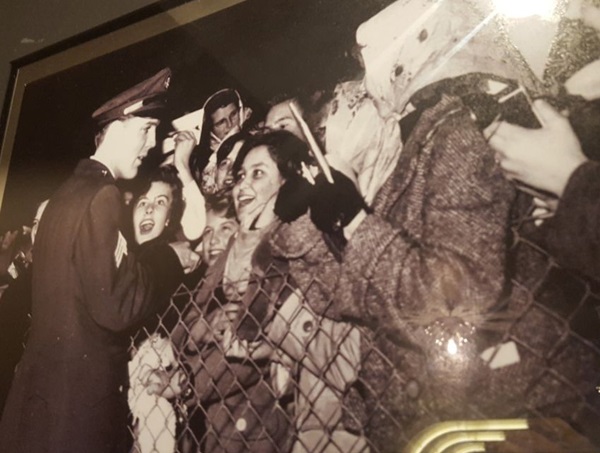
An acrylic painting entitled Elvis, by Simon Clark.
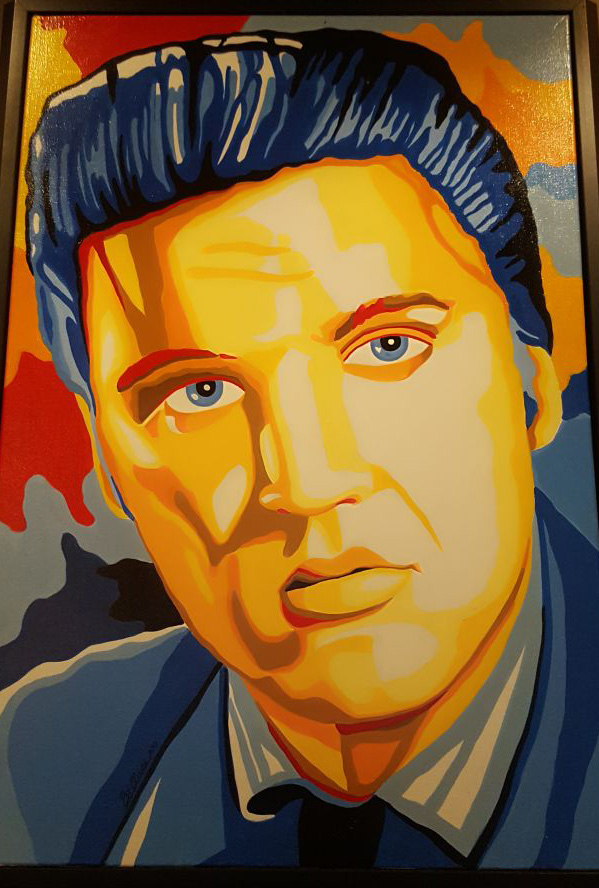
A collection of historical photographs of Prestwick.
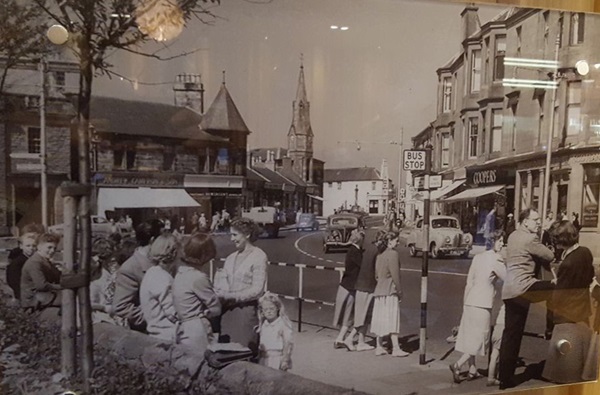
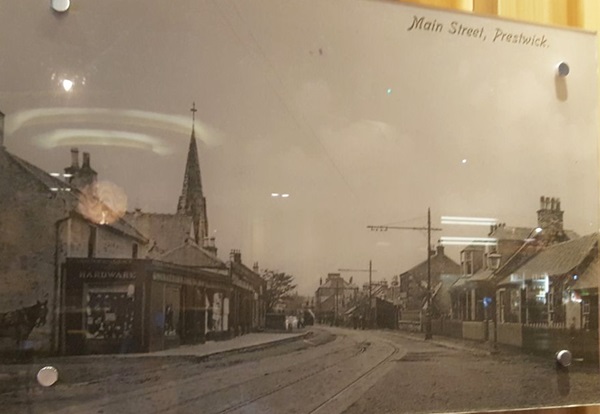
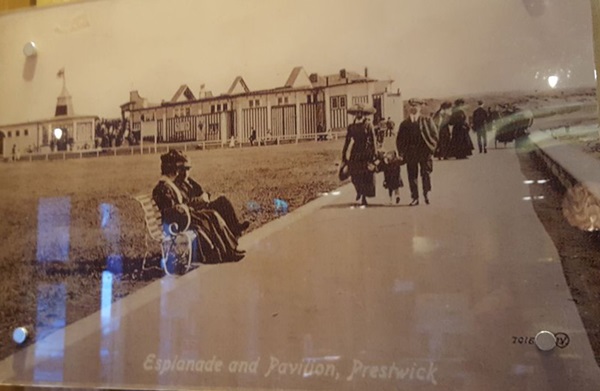
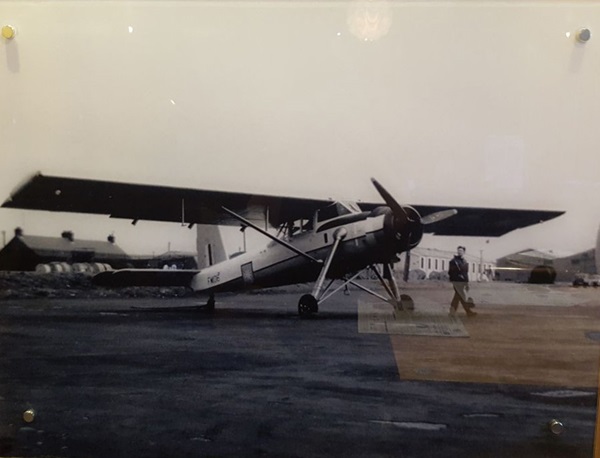
External photograph of the building – main entrance.
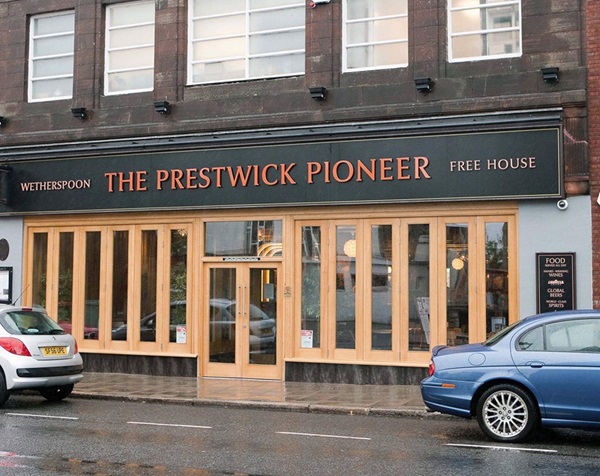
If you have information on the history of this pub, then we’d like you to share it with us. Please e-mail all information to: pubhistories@jdwetherspoon.co.uk